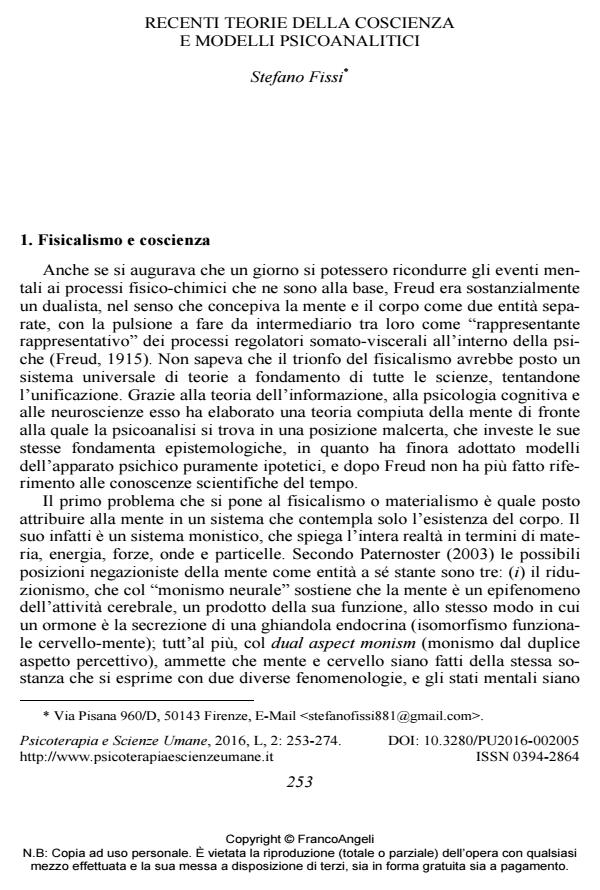Recent theories of consciousness and psychoanalytic models
Journal title PSICOTERAPIA E SCIENZE UMANE
Author/s Stefano Fissi
Publishing Year 2016 Issue 2016/2
Language Italian Pages 22 P. 253-274 File size 88 KB
DOI 10.3280/PU2016-002005
DOI is like a bar code for intellectual property: to have more infomation
click here
Below, you can see the article first page
If you want to buy this article in PDF format, you can do it, following the instructions to buy download credits

FrancoAngeli is member of Publishers International Linking Association, Inc (PILA), a not-for-profit association which run the CrossRef service enabling links to and from online scholarly content.
The physicalism provides a reductionist explanation of consciousness, disregarding the phenomenal quality of subjective experience. The models of multiple narratives, of integrated information theory and of global workspace theory deal with the cognitive accessibility, explaining only how information is experienced since it is globally accessible. The unconscious of cognitive psychology doesn’t rely on repression like the psychoanalytic unconscious, but on a stochastic occurring of cognitive events. Because of the difference between implicit and explicit memories, the psychoanalytic technique must be widened from interpretation to the analysis of intersubjective consciousness of meeting moments between patient and analyst. Regarding forgotten memories, the playful climate and the empathic stance of the analytical situation can restore the narrative context and improve cerebral trophysm.
Keywords: Consciousness, information, integration, global workspace, implicit memory
Stefano Fissi, Recenti teorie della coscienza e modelli psicoanalitici in "PSICOTERAPIA E SCIENZE UMANE" 2/2016, pp 253-274, DOI: 10.3280/PU2016-002005